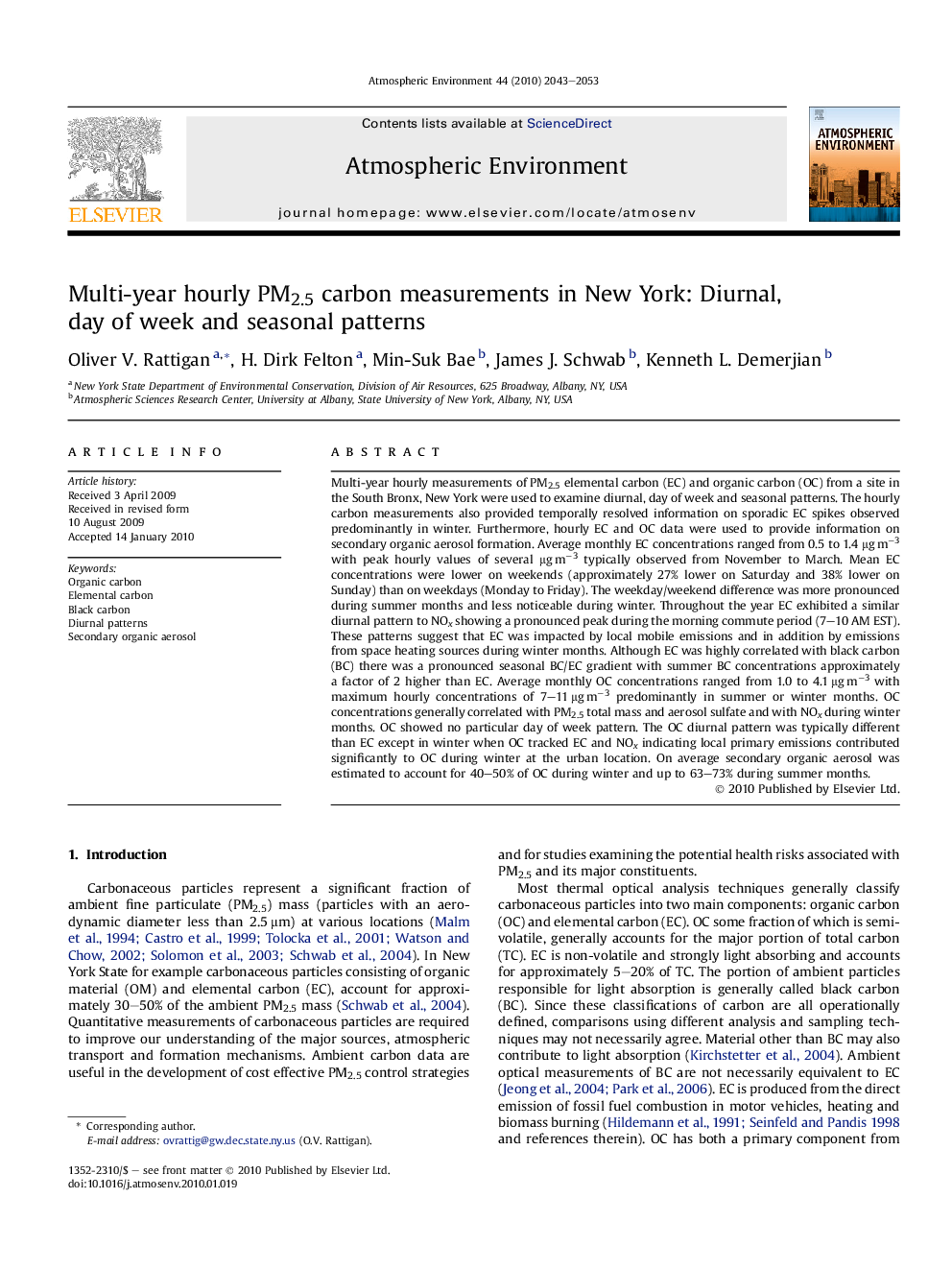| Article ID | Journal | Published Year | Pages | File Type |
|---|---|---|---|---|
| 4440778 | Atmospheric Environment | 2010 | 11 Pages |
Multi-year hourly measurements of PM2.5 elemental carbon (EC) and organic carbon (OC) from a site in the South Bronx, New York were used to examine diurnal, day of week and seasonal patterns. The hourly carbon measurements also provided temporally resolved information on sporadic EC spikes observed predominantly in winter. Furthermore, hourly EC and OC data were used to provide information on secondary organic aerosol formation. Average monthly EC concentrations ranged from 0.5 to 1.4 μg m−3 with peak hourly values of several μg m−3 typically observed from November to March. Mean EC concentrations were lower on weekends (approximately 27% lower on Saturday and 38% lower on Sunday) than on weekdays (Monday to Friday). The weekday/weekend difference was more pronounced during summer months and less noticeable during winter. Throughout the year EC exhibited a similar diurnal pattern to NOx showing a pronounced peak during the morning commute period (7–10 AM EST). These patterns suggest that EC was impacted by local mobile emissions and in addition by emissions from space heating sources during winter months. Although EC was highly correlated with black carbon (BC) there was a pronounced seasonal BC/EC gradient with summer BC concentrations approximately a factor of 2 higher than EC. Average monthly OC concentrations ranged from 1.0 to 4.1 μg m−3 with maximum hourly concentrations of 7–11 μg m−3 predominantly in summer or winter months. OC concentrations generally correlated with PM2.5 total mass and aerosol sulfate and with NOx during winter months. OC showed no particular day of week pattern. The OC diurnal pattern was typically different than EC except in winter when OC tracked EC and NOx indicating local primary emissions contributed significantly to OC during winter at the urban location. On average secondary organic aerosol was estimated to account for 40–50% of OC during winter and up to 63–73% during summer months.
